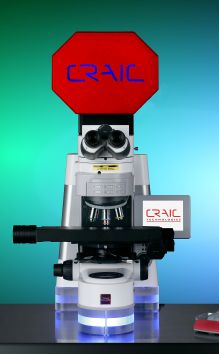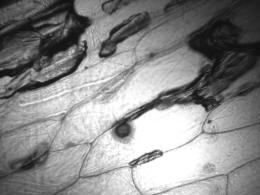Vision Research

Microspectrophotometers are used for vision research and the study of photoreceptors

Microspectrometers are able to measure the optical effects of light on photoreceptors
Vision research uses microspectrophotometers to study photoreceptors on the micron scale.
Vision Research is a broad field of science that deals with understanding vision in every aspect from the optics to the neuroscience. One aspect of vision research is to understand the chemistry that occurs during the process of vision. This necessitates studying photoreceptors and visual pigments of all types of animals under different lighting conditions. Since many of the material that is studied is extremely small, specialized microspectrophotometers have been built to analyze them.
Light with a high enough energy (above a certain wavelength) is absorbed by a photosensitive pigment inside the photoreceptor cell, such as rhodopsin, which causes retinal to change shape. This results in a series of changes on the molecular scale which results in the stimulation of neurons and eventually vision. The microspectrophotometers that are used for vision research are specially designed so that molecules like rhodopsin or retinal are not stimulated before any measurements are made.
To learn more about microspectroscopy and vision research, select one of the following links:What is a Microspectrophotometer?
Science of Microspectrophotometers


